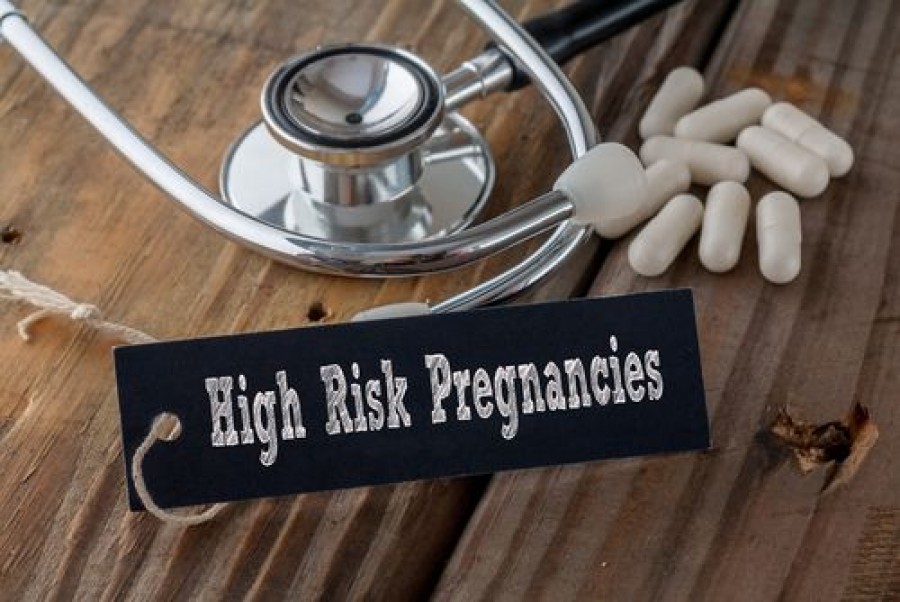High Risk Pregnancy

What is a high-risk pregnancy?
A high-be risk pregnancy is a phrase which to a lot of women might sound a bit “scary” but it just means that the chances of the pregnancy developing some kind of complication are higher than usual thereby leading to the rise of some health issues in the baby. Research has shown that about six to eight percent of all pregnant women worldwide are considered high-risk.
Why is it called high-risk pregnancy?
The term “high-risk” in pregnancy is used to let doctors know that the concerned pregnant women and her baby need constant attention, monitoring and proper care in order to make sure that the woman’s status returns back to “normal” by detecting any potential health issues during the pregnancy as early as possible thereby preventing her condition from getting worse.
What is the cause of a high-risk pregnancy?
There are a number of different factors which might cause a normal pregnancy to turn into one that is high-risk. Some of such risk factors are mentioned as follows:
Diabetes in the mother
Diabetes is a complex condition which affects all parts of the body. It occurs in any person regardless of age, race and gender as a result of the body of the mother either having no insulin at all or making far less amount of insulin than what is required by the body of the individual.
High Blood Pressure
Blood pressure is the term used to describe the amount of pressure which an individual’s blood exerts on the arteries as they carry the blood being pumped by the heart, all around the body. The blood pressure reading of 120/80 is considered as “ideal.” An individual is thought to have a high blood pressure when the reading rises to atleast 140/90 or above.
Smoking
Pregnant women who smoke tend to develop complications far more often than those who are not smokers. There is a substance in cigarettes called nicotine, which causes a couple of changes to the affected individual’s body. Firstly, the individual becomes addicted to smoking due to nicotine being highly addictive. Secondly, this substance leads to the narrowing of blood vessels thereby increasing the blood pressure of the pregnant woman. High blood pressure is a well known factor for the occurrence of a high risk pregnancy.
Kidney Disease
The kidneys are responsible for the removal of waste products which are present in the blood of an individual. If due to some reason, the kidneys stop performing their normal function in a proper manner, it would lead to the buildup of fluid within the body of the individual thereby causing the blood pressure to rise and the subsequent development of a high-risk pregnancy takes place.
Epilepsy
Epilepsy is a condition which gives rise to multiple episodes of seizures. Seizures occur when the nerve cells which transmit messages from the brain to the body and vice versa become confused and begin misfiring. This condition often leads to the individual falling unconscious or suffering from blackouts thereby making epilepsy yet another factor behind a high-risk pregnancy.
What are the complications of a high-risk pregnancy?
It has already been established that a high-risk pregnancy is an undesirable state for a pregnant woman to find herself in. The reason behind such a state of mind on the part of the pregnant woman is the complications which might make an appearance in the affected individual. A few of these complications include the following:
Preterm Labour
Preterm Labour, also known as premature labour, is a condition in which the body of a pregnant woman starts preparing itself to deliver the baby by starting the contractions of the uterus and the subsequent dilation of the cervix, before a period of 37 weeks, which is considered a standard for a normal on term delivery.
Preeclampsia
Preeclampsia is a condition which affects pregnant woman during the later stages of her pregnancy, usually after the 20th week. The pregnant woman might present with a number of issues such as high blood pressure, presence of protein in urine, abdominal pain, nausea, vomiting and severe headache. A more severe condition associated with a pregnant woman is called eclampsia. In addition to the signs of symptoms of preeclampsia, sufferers of eclampsia also go through seizures every now and then.
Issues of the placenta
The placenta is a large organ which is present inside the uterus and is connected to the fetus through the umbilical cord. It is responsible for providing the fetus with proper nutrients and oxygen from the blood of the mother and at the same time removes any unwanted or waste products from the fetus’s blood. Research suggests that a woman with a high-risk pregnancy often develops issues with the placenta thereby causing the placenta to malfunction and become ineffective. This means that the baby would not receive the nutrition is usually gets from its mother in adequate amounts.
What is the diagnosis and treatment of a woman with high-risk pregnancy?
The diagnosis and treatment of a woman with a suspected case of high-risk pregnancy depends of her medical history, family history as well as the signs and symptoms she might complain about to her doctor. The pregnant woman is advised to visit the doctors as regularly as possible, certainly more frequently than a woman with a normal or uncomplicated pregnancy.
At every single stage or phase of the pregnancy, the mother is required (and advised by the doctor) to get a few tests done on herself and her baby such as ultrasound, blood sugar, blood pressure measurement, urine test in order to detect the present of any disease causing organism in it. Genetic tests might also be carried out in order to look for any mutation or abnormality in the DNA or genetic makeup of the mother and the baby. This holds true for mothers who become pregnant at and above the age of 35 or those with a history of genetic issues in their families.
All these tests and procedures are extremely important to keep a check on the overall health, growth and development of both the mother and her baby.



